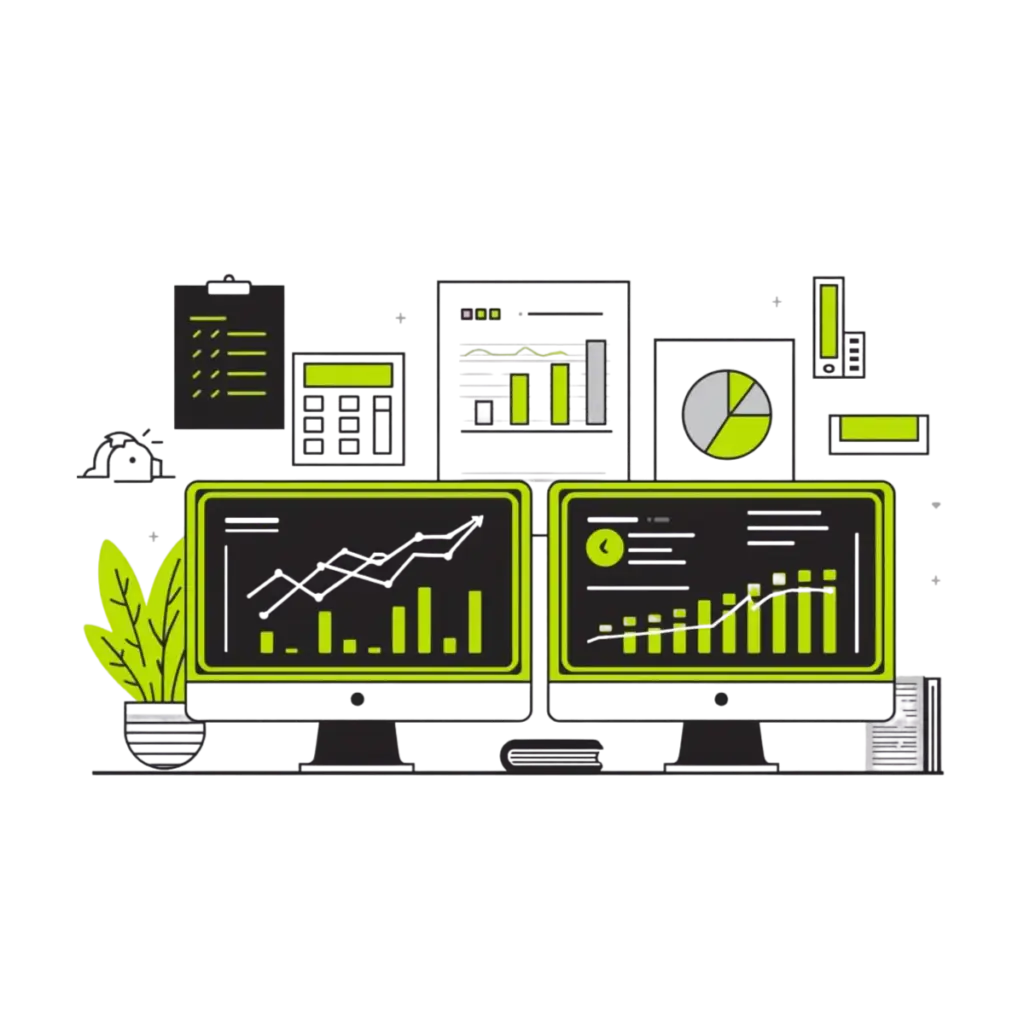November 10, 2025
How to Use Multi Touch Attribution Models for Content Marketing

Multi-touch attribution transforms content marketing from guesswork into data-driven strategy. While single-touch attribution models credit one interaction in the buyer journey, multi-touch attribution recognizes the reality of modern B2B buying behavior: prospects consume multiple pieces of content across months-long decision processes before converting.
B2B buyers interact with an average of 27 pieces of content before making purchase decisions. Single-touch attribution undervalues content marketing ROI by 73% in B2B environments. Without proper attribution, marketing leaders make budget decisions based on incomplete data, systematically underinvesting in content that drives real business results.
Why Multi Touch Attribution Is Critical for Content Marketing Success (4 Key Reasons)
Content marketing requires attribution approaches that account for complex consumption patterns, extended buyer journeys, and the cumulative impact of multiple touchpoints. Standard marketing attribution models miss these nuances.
Content’s Role in Complex, Multi-Touchpoint Customer Journeys
Content marketing creates interconnected ecosystems where prospects engage with multiple formats across various stages. Discovery content builds initial awareness, research content supports vendor evaluation, and decision content influences final conversion. Each interaction builds on previous engagements, creating cumulative influence that single-touch attribution completely misses.
Salesforce studies show content assists in 89% of B2B conversions but receives credit for only 23% with last-click attribution. This massive undervaluation leads to poor budget allocation and strategic decisions based on incomplete performance data.
Why Single-Touch Attribution Fails for Content Marketing Measurement
Single-touch models create systematic blind spots by attributing all conversion credit to one touchpoint. First-touch attribution ignores all nurturing content that moves prospects through consideration, while last-touch attribution credits only the final interaction before conversion, completely missing the awareness and trust-building content that made conversion possible.
Content Consumption Pattern Differences in B2B vs B2C Environments
B2B content consumption follows unique patterns requiring specialized attribution approaches:
- Extended research periods: 6-18 month consideration cycles vs days/weeks for B2C
- Multiple decision makers: Content shared among buying committees
- Format diversity: Mix of educational, analytical, and tactical content
- Cross-device consumption: Mobile research, desktop evaluation, collaborative sharing
Multi-Touch Attribution’s Impact on Content ROI Accuracy
Organizations implementing multi-touch attribution consistently discover significant undervaluation of content marketing. Blog content shows 340% higher attribution value with multi-touch versus single-touch models. An enterprise software company discovered content influenced 78% of deals versus 15% with last-click attribution, leading to 60% content budget increase and 156% ROI improvement.
What Are the 4 Multi Touch Attribution Models for Content Marketing?
Multi-touch attribution models distribute conversion credit across multiple content touchpoints using different weighting methodologies. Each model serves specific strategic purposes and organizational needs.
[INSERT IMAGE: Four attribution models visualization showing credit distribution across content touchpoints. Prompt: Create a side-by-side comparison showing 4 different attribution models (Linear, Time-Decay, Position-Based, Custom) with content touchpoints and percentage credit distribution for each model.]
Linear Multi-Touch Attribution for Content
How it works: Distributes equal credit across all content touchpoints in the buyer journey.
Linear attribution provides 82% accuracy for content marketing ROI measurement. Best for companies with balanced content strategies across awareness, consideration, and decision stages. Implementation requires 2-3 weeks for basic setup, 6-8 weeks for advanced configuration.
Strategic advantages:
- Values all content interactions equally
- Provides unbiased view of content ecosystem performance
- Simple to understand and explain to stakeholders
Time-Decay Multi-Touch Attribution for Content
How it works: Assigns higher attribution credit to content interactions closer to conversion.
Time-decay models show 45% higher accuracy for content attribution in sales cycles over 6 months. Best practice uses 30-day decay for short cycles, 90-day for enterprise B2B. A manufacturing company increased content attribution accuracy by 65% using time-decay versus linear attribution.
Optimal for:
- Organizations with strong bottom-funnel conversion focus
- Companies with clear sales cycle phases and timing
- Content strategies emphasizing decision-stage content
Position-Based (U-Shaped) Multi-Touch Attribution for Content
How it works: Assigns 40% credit to first content interaction, 40% to conversion content, and 20% distributed among middle touchpoints.
U-shaped attribution models provide 91% correlation with actual content influence in B2B sales. Companies see an average 35% improvement in content budget allocation accuracy. Requires robust first-party data and cross-device tracking for optimal performance.
Platform options:
- Advanced: Salesforce Einstein Attribution, Adobe Analytics Attribution IQ
- Mid-Market: HubSpot Attribution Reporting, Google Analytics 4
- Basic: UTM tracking with CRM integration
Custom Multi-Touch Attribution for Content
How it works: Creates tailored credit distribution based on content type, engagement depth, and specific business objectives.
Custom attribution models increase content ROI measurement accuracy by 58% versus standard models. Requires advanced analytics platforms, data science resources, and minimum 6 months historical data. Best suited for large organizations with complex content strategies.
Advanced capabilities:
- Content engagement weighting based on time spent and interactions
- Format-specific attribution (video weighted higher than blog posts)
- Business objective alignment with custom rules
How to Choose the Right Multi Touch Attribution Model for Your Content (5-Step Framework)
Step 1: Assess Your Content Marketing Maturity and Sales Cycle Length
Sales cycle considerations:
- Short cycles (under 3 months): Time-decay attribution optimal
- Medium cycles (3-6 months): Position-based attribution recommended
- Long cycles (6+ months): Custom attribution with engagement weighting
Attribution model selection based on sales cycle length improves accuracy by 42%. Best practice involves piloting multiple models for 90 days before final selection.
Step 2: Evaluate Your Technology Stack and Data Capabilities
Platform compatibility:
- HubSpot: $800-3,200/month, native attribution with medium complexity
- Salesforce Einstein: $5,000+/month, advanced custom models, high complexity
- Google Analytics 4: Free-$150k/year, data-driven attribution, low-medium complexity
- Adobe Analytics: $3,000-15,000/month, comprehensive modeling, high complexity
Companies with integrated attribution stacks see 67% higher model accuracy.
Step 3: Define Content Attribution Objectives and Success Metrics
Set clear targets for content-influenced pipeline percentage (40-70% for mature B2B programs), content-assisted conversion rates by type, and attribution confidence intervals (85%+ accuracy validation).
Step 4: Implement Baseline Measurement and Model Testing
Establish pre-implementation benchmarks, run parallel models for 6-8 weeks, and validate results against sales team feedback. Test attribution accuracy using holdout groups and A/B methodology.
Step 5: Optimize and Iterate Based on Performance Data
Companies that iterate attribution models quarterly see 28% higher ROI accuracy. Implement monthly performance reviews, quarterly validation, and annual strategic assessment.
How to Implement Multi Touch Attribution for Content Marketing (6-Phase Process)
[INSERT IMAGE: 6-phase implementation timeline showing weeks 1-12 with key deliverables. Prompt: Create a project timeline showing 6 phases over 12 weeks with specific tasks, technology integrations, and team training milestones.]
Phase 1: Content Touchpoint Audit and Mapping (Weeks 1-2)
Complete content asset inventory across all channels, analyze consumption patterns, implement UTM standardization, and develop content taxonomy. Comprehensive touchpoint mapping improves attribution accuracy by 52%.
Phase 2: Technology Integration and Data Pipeline Setup (Weeks 3-4)
Configure CRM integration (Salesforce, HubSpot, Pipedrive), set up analytics platforms (GA4, Adobe Analytics), and establish real-time data streaming. Integrated systems provide 4.2x more accurate content ROI measurement.
Phase 3: Attribution Model Configuration and Testing (Weeks 5-6)
Implement selected attribution model, run parallel validation testing, and establish confidence interval monitoring. Use historical data analysis for model performance assessment.
Phase 4: Reporting Dashboard and Analytics Setup (Weeks 7-8)
Develop executive-level attribution dashboards, operational monitoring interfaces, and automated reporting systems. Focus on content-influenced revenue metrics and attribution accuracy indicators.
Phase 5: Team Training and Adoption (Weeks 9-10)
Provide attribution fundamentals training, platform-specific tool education, and change management support. Establish attribution champion programs and ongoing education initiatives.
Phase 6: Optimization and Continuous Improvement (Ongoing)
Implement weekly performance monitoring, monthly strategy optimization, quarterly model review, and annual program evaluation. Companies with structured optimization see 41% higher content ROI within 12 months.
5 Advanced Multi Touch Attribution Techniques for Content Marketing
Technique 1: Content Engagement-Weighted Multi-Touch Attribution
Weight attribution credit based on engagement depth (time on page, downloads, shares), content format influence, and quality scores. Engagement-weighted attribution increases content ROI accuracy by 47% versus standard models.
Technique 2: Cross-Device Content Attribution with Identity Resolution
B2B buyers use 3.2 devices on average during content consumption. Cross-device attribution prevents 41% attribution loss through advanced user identity resolution and consumption pattern analysis across devices.
Technique 3: Offline Content Attribution Integration
Offline content influences 52% of B2B conversions but receives only 18% attribution credit. Integrate sales team content usage tracking, event attribution, and print material influence measurement for comprehensive attribution.
Technique 4: Predictive Content Attribution Modeling
Use machine learning to predict content performance and optimize strategy based on attribution patterns. Predictive models improve content strategy effectiveness by 38% through data-driven planning.
Technique 5: Content Attribution Cohort Analysis
Analyze attribution performance by customer segments, temporal factors, and content types. Cohort-based analysis reveals 63% variation in content effectiveness by segment, enabling targeted optimization.
How to Optimize Content Strategy Using Multi Touch Attribution Data (4 Proven Methods)
Method 1: Attribution-Based Content Portfolio Optimization
Reallocate budget based on content attribution performance, optimize format mix for maximum value, and scale high-attribution topics. A B2B SaaS company increased content ROI by 156% through attribution-driven budget reallocation.
Method 2: Content Journey Optimization Using Attribution Insights
Map optimal content sequences, identify consumption gaps, and optimize touchpoint progression. Content journey optimization increases conversion rates by 43% through strategic sequencing.
Method 3: Content Distribution Channel Optimization
Analyze attribution performance by distribution channel, optimize channel mix based on insights, and scale high-attribution strategies across content types.
Method 4: Content Timing and Frequency Optimization
Optimize publishing schedules based on attribution patterns, adjust frequency for maximum impact, and align content lifecycle with attribution insights.
Common Multi Touch Attribution Mistakes to Avoid in Content Marketing (5 Critical Errors)
Mistake 1: Ignoring Content-Specific Attribution Requirements
Using general marketing attribution without considering content’s unique consumption patterns and influence mechanisms.
Mistake 2: Insufficient Cross-Device Tracking Implementation
Missing 35-40% attribution value without proper cross-device tracking and identity resolution.
Mistake 3: Overlooking Offline Content Attribution
Failing to integrate sales team usage, events, and print materials creates significant attribution blind spots.
Mistake 4: Poor Attribution Model Selection for Content Strategy
Choosing models that don’t align with sales cycle characteristics and content strategy objectives.
Mistake 5: Lack of Attribution Data Validation and Quality Control
Implementing attribution without proper validation leads to inaccurate insights and poor decisions.
Companies avoiding these mistakes see 67% higher attribution accuracy and 34% better content ROI.
Frequently Asked Questions
Q1: How long does it take to implement multi-touch attribution for content marketing?
Implementation typically takes 8-12 weeks for comprehensive setup, with basic tracking possible in 4-6 weeks for mid-market companies.
Q2: What’s the ROI improvement from implementing multi-touch attribution vs. single-touch?
Companies see 45-65% improvement in measurement accuracy and 25-35% increase in actual content performance within 6 months.
Q3: Which multi-touch attribution model is best for B2B content marketing?
Position-based attribution is optimal for 74% of B2B companies with sales cycles over 6 months, while time-decay works best for 3-6 month cycles.
Q4: How much does multi-touch attribution technology cost for content marketing?
Basic solutions cost $1,200-3,000/month, while enterprise solutions range from $8,000-25,000/month depending on complexity.
Q5: Can small content marketing teams implement multi-touch attribution effectively?
Yes, 84% of small teams implement effective attribution using mid-market tools like HubSpot or Google Analytics 4.
Multi-touch attribution transforms content marketing from intuition-based creation to data-driven strategy optimization. Organizations implementing systematic attribution gain competitive advantages through superior measurement, strategic budget allocation, and performance optimization. The key is selecting models aligned with content strategy objectives, implementing robust tracking across touchpoints, and using insights for continuous improvement.
Ready to Take Your SEO & GEO Rankings to the Top?
Request your free site audit, and we’ll even include a sample article created for your business to get an idea of what we can produce for you at scale.
Blog
Explore Our Latest Articles
November 17, 2025
SEO Content Marketing for Local Businesses: A 90 Day Action Plan

Read Article
November 17, 2025
SEO Content Marketing for Financial Services: A 90 Day Action Plan from Zero

Read Article
November 17, 2025
SEO Content Marketing for Professional Services: A 90-Day Plan for Creating a Library of Expertise

Read Article
Ready to Take Your SEO & GEO Rankings to the Top?
Request your free sample article created for your business to get an idea of what we can produce for you at scale.
